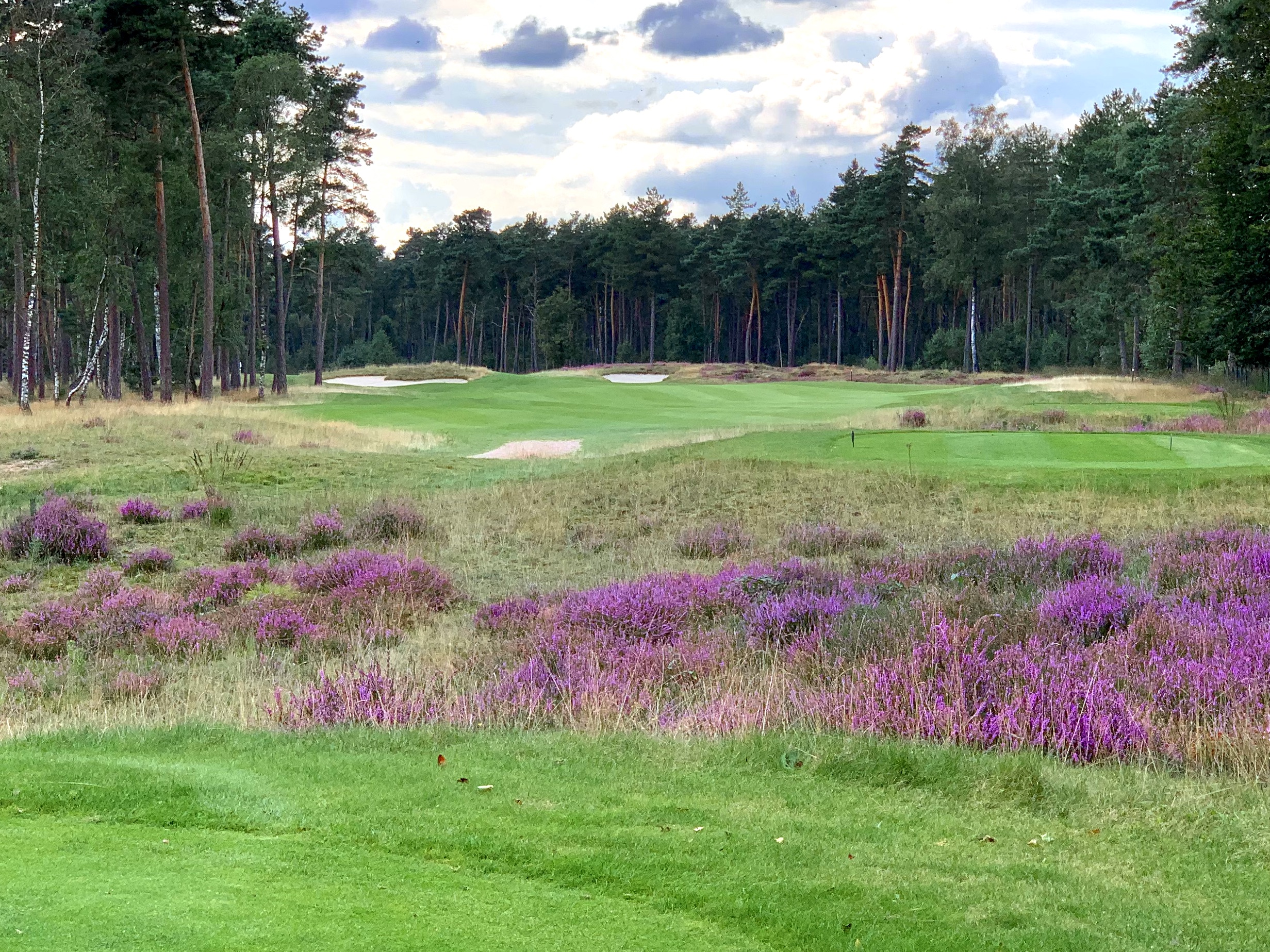THE ULTIMATE GOLFING EXPERIENCE
The Rosendaelsche Golf Club is located in a wooded area near Arnhem. The course is characterized by holes with blind tees and many elevation changes. For many a golfer, the Rosendaelsche is on the bucket list of 'Dutch courses to play'. And not for the least reason. You might just spot deer during your round, the course is challenging and the wooded setting with beautiful vistas is spectacular in all seasons.
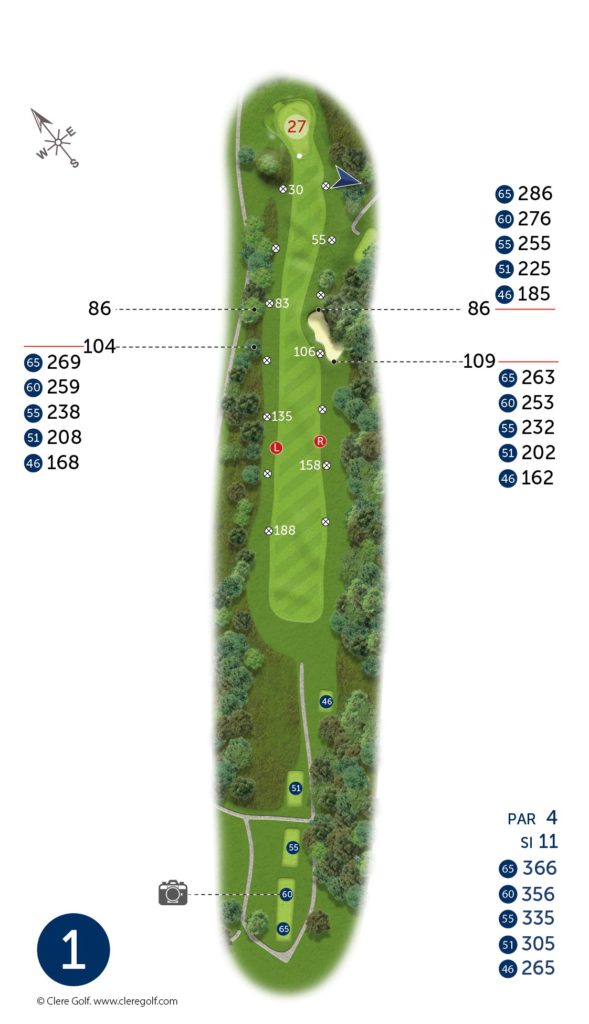
HOLE 1
The tee shot for the first hole is next to the clubhouse with spectators watching from the terrace. Against the rhododendrons to the left of the tee is a concrete bench donated by Aalbrecht A. del Court van Krimpen in 1925. When teeing off, players are immediately aware of the obstacles of the hole. The view of the fairway is partly obstructed by a hill covered with heather. In addition, there are large beech trees on both sides of the front tees, which punish swinging from the back tees. A hundred metres from the green, there is a bunker on the right, which is an extra challenge for the longhitters. The slope behind the bunker slopes left towards the green; the left side of the green is protected by a large oak tree. The green is tricky; the slope goes from right to left and from front to back.
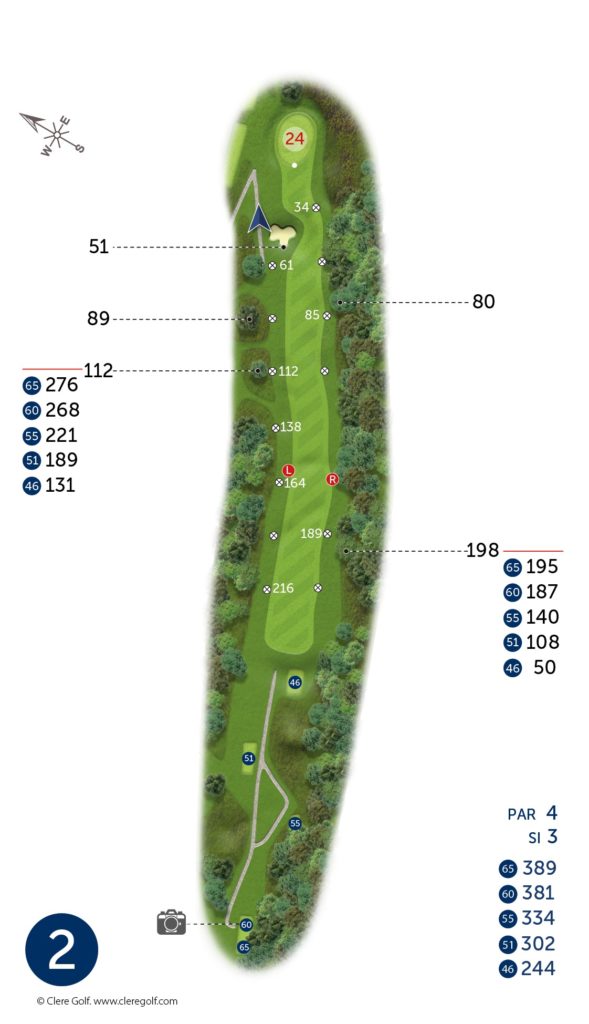
HOLE 2
The second hole is one of the most difficult holes on the course. From the back tees, players have a blind shot to the fairway over a hill at the level of the front tees. To the left before the green is a bunker; a slope just before the green gives the ball additional roll toward the green. When approaching the green, the right side is the ideal line. The green is large and slopes toward the back.
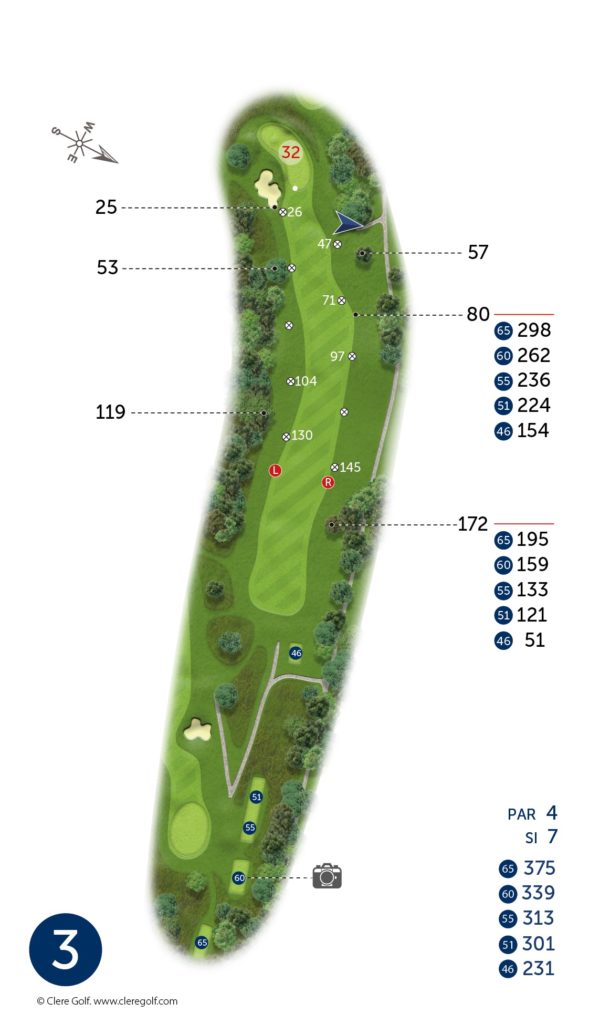
HOLE 3
From the back tees the player gets a fantastic view of the hole. Hole 3 has a dogleg to the left with a blind shot to the green. The green is on a plateau and guarded by a bunker on the left; golf balls landing to the right of the green are punished by a steep slope sloping to the right and a row of trees.
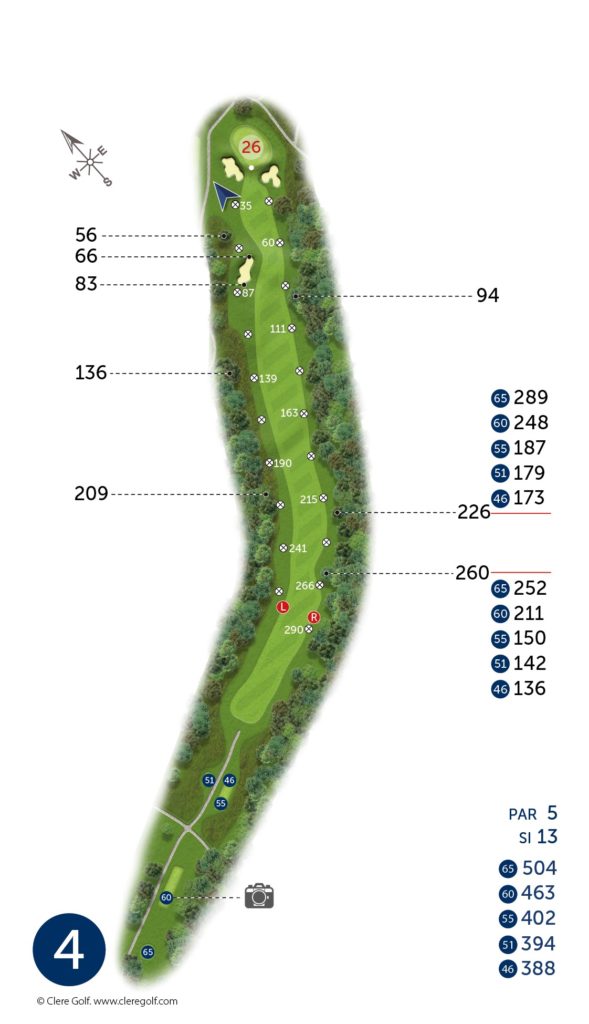
HOLE 4
The first par 5 of the course has a dogleg to the left. Players who keep the ball too much to the left when teeing off to try to cut the dogleg will have a problem on the second stroke. From the turn, the fairway slopes upward; a fairway bunker on the left side comes into play on the second stroke. The green is characterized by two levels and has bunkers on both sides.
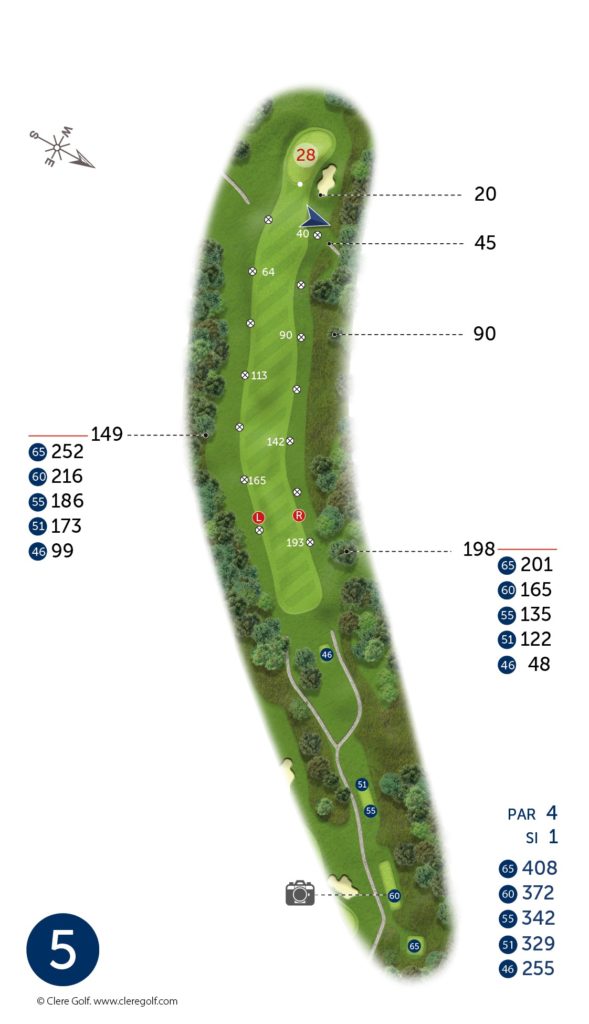
HOLE 5
The fifth hole is a par 4 with dogleg to the right. The most difficult hole of the course; even though it seems easy. To reach the fairway, players must hit the ball over a heath mound. The pine forest on the right penalizes drifters; cutting the corner is reserved for real longhitters. The fairway slopes to the left, giving players a better line to the green. A ledge divides the green into left and right sections. To the right of the green is a bunker.
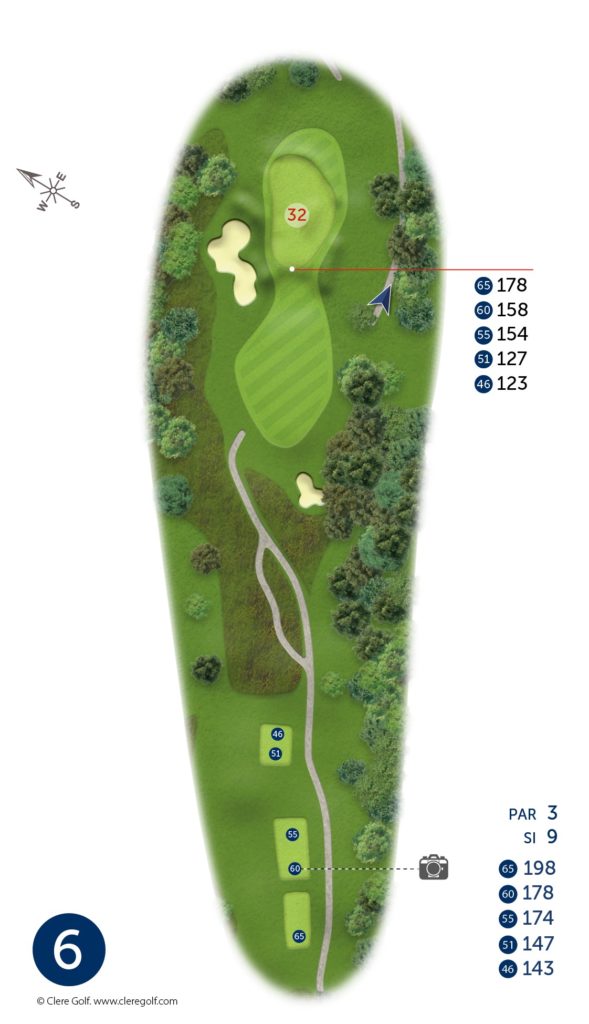
HOLE 6
The sixth hole is a par 3 that was put into use in 2014. The view of the green suggests worse because of the heather and bunkers in sight, the front green is some 60 metres deep. The left bunker protects the large, somewhat deep green. Behind the green is a deep runoff in which over-long shots disappear inexorably all the way to the bottom.
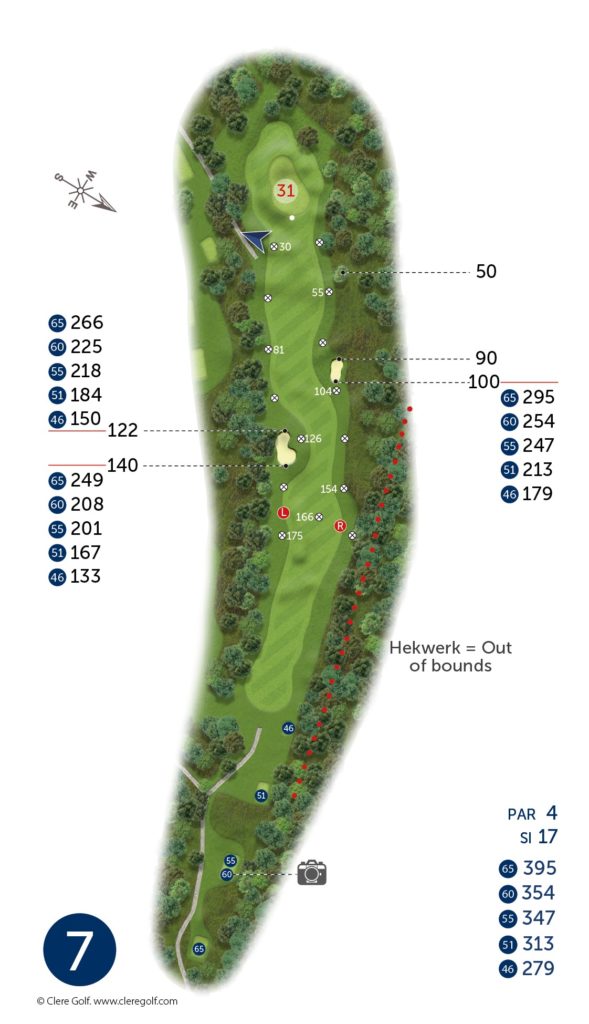
HOLE 7
Hole 7, a par 4, is the second new hole that came into use in 2014. It is a slight dogleg to the left. On the right side, the fence is the boundary of the terrain. Longhitters will have to take into account the two fairway bunkers. The green is spacious and has the usual "Rosendaelsche" undulations. On the left side, from front left to back right, there is a treacherous runoff: too much left and/or too long will be punished.
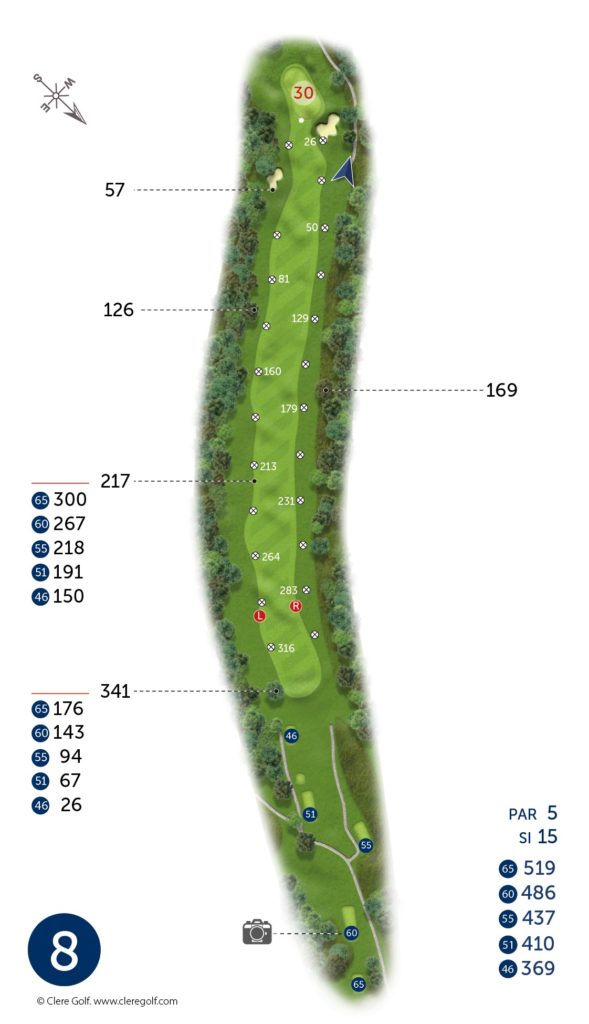
HOLE 8
Hole 8 has a slight dogleg to the right and is the longest hole of the course. From the tee to the beginning of the fairway is a large heathland plain. The highly undulated fairway slopes up toward the green which is guarded by two bunkers. The first bunker is on the right 60 yards from the green, the second (deep) bunker is on the right in front of the green. When approaching the green, players can use the mound on the left side in front of the green. The renovated green, inaugurated in 2000, is the largest green at course and is composed of several levels .
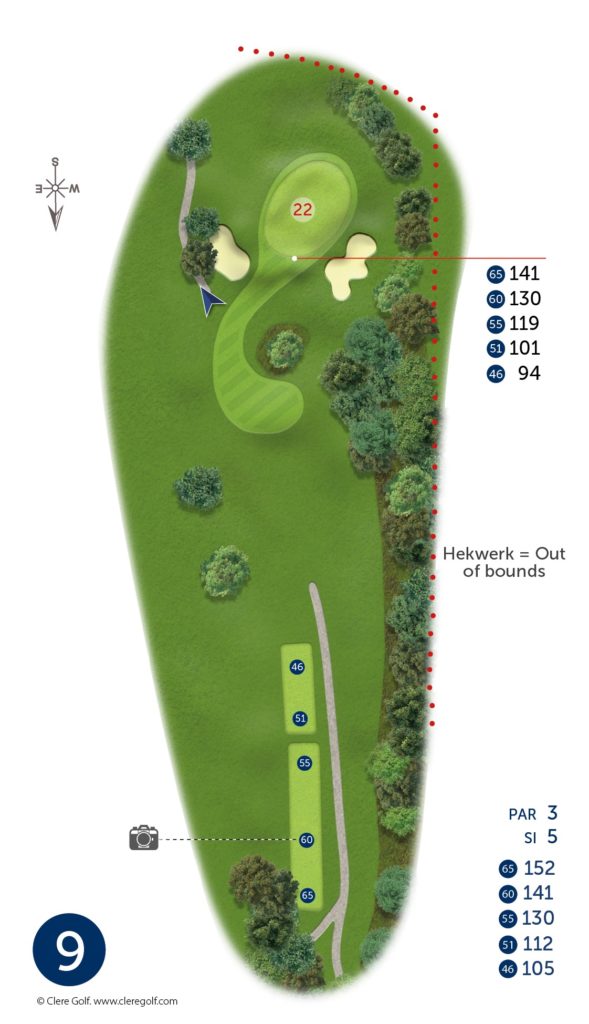
HOLE 9
The ninth hole is a short par 3. The green is on a plateau. In front of it is a large pine tree, which hinders the approach. Left and right are bunkers; long shots disappear at the back in a grass bunker. The green looks flat, but it is not. Described by the architect as an "optical illusion", don't be surprised if your beautiful putt just before the cup goes past it after all.
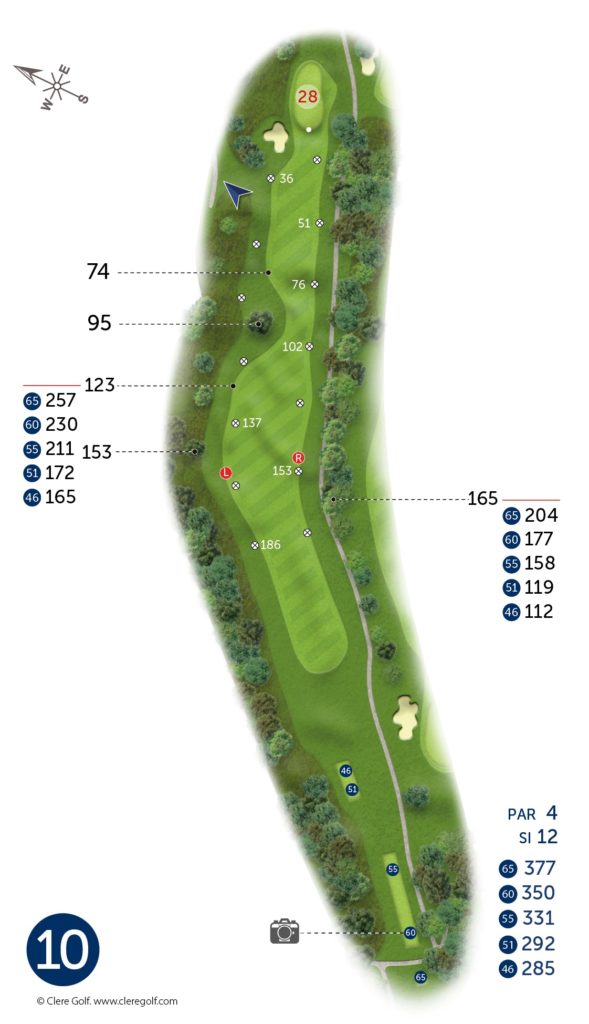
HOLE 10
Hole 10 has a slight dogleg to the right. In the bend at the 150 metre pole, branches hang partially over the edge of the fairway. At 120 metres from the green, there is a small hill in the middle of the fairway covered with trees. Players who left their shot or placed it too long will be partially hampered in their approach to the green. In front of the green, there is a bunker on the left with a moorland hill behind it. On the right side is a shallow runoff. The green is long and very flat.
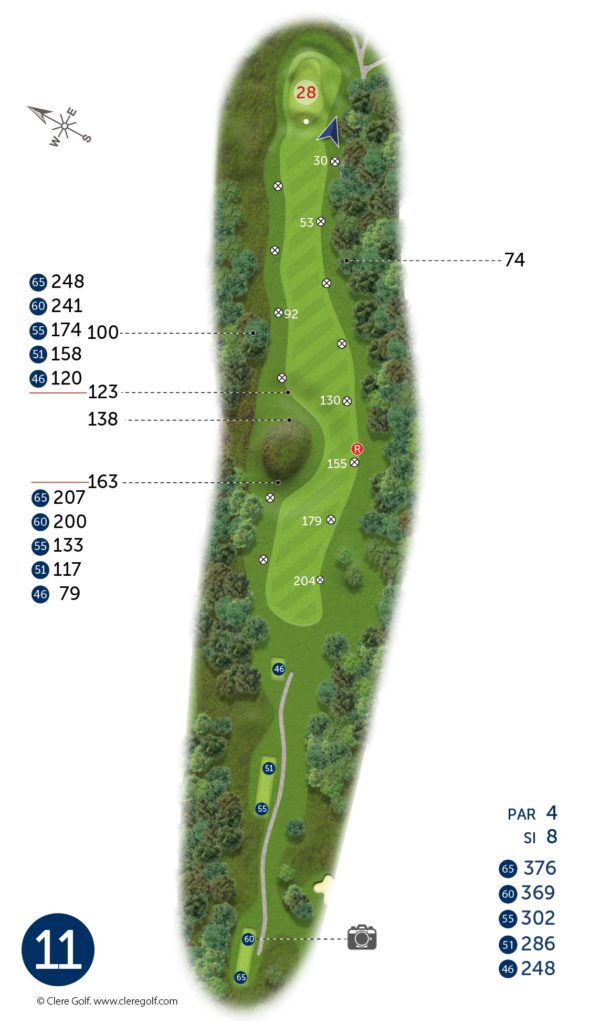
HOLE 11
On the back tees, players cannot see the green due to a large hill 150 metres from the green. To the right of the hill is a narrow passage to the wide fairway. From here, the flag can be seen. The fairway slopes slightly towards the green. Instead of bunkers, the sides of the green slope down significantly to the left and right. Left behind the green, the slope is steepest and a rolled ball will come to a deep stop.
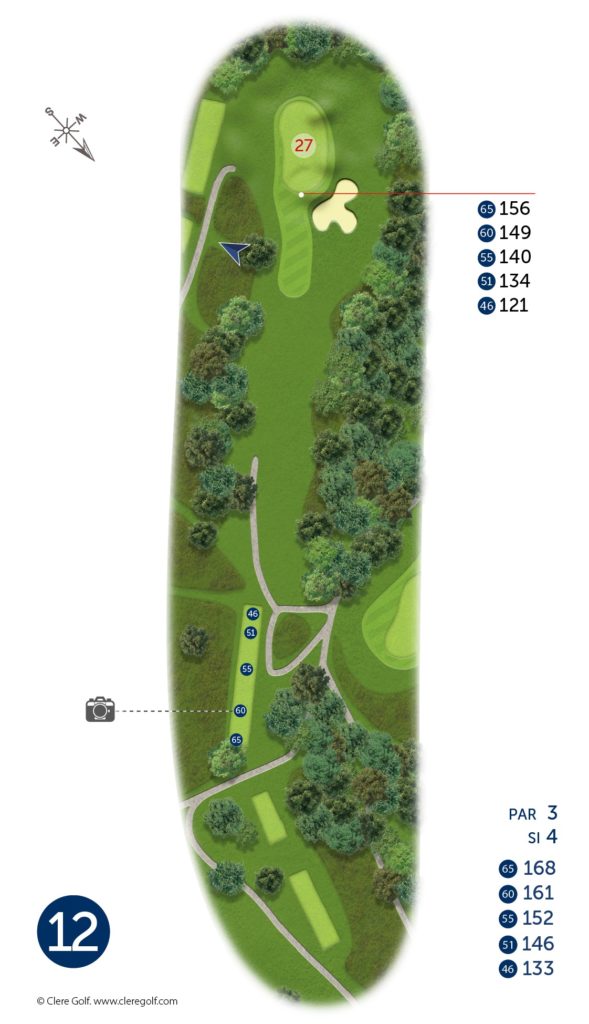
HOLE 12
This par 3 runs uphill to a high green; it therefore plays longer than it looks. The passage is narrowed by pines on both sides of the fairway; around the green is more space but with a treacherous rough on the left. The unvegetated green of hole 12 was built in 1998 and slopes sharply backwards; over-long shots result in a tricky downhill putt.
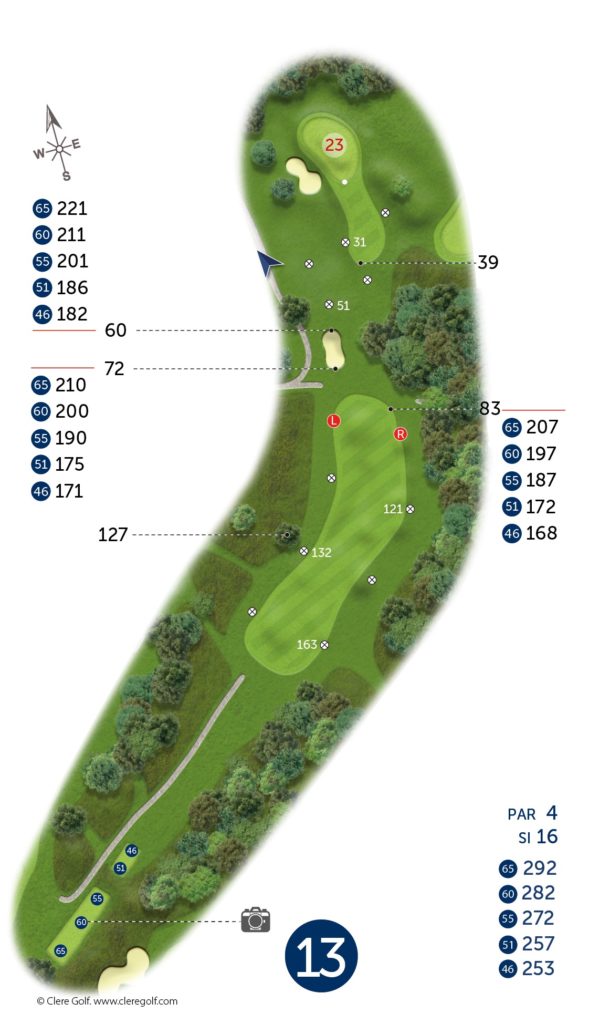
HOLE 13
Hole 13, a short par 4, is the most beautiful hole on the course according to our members. From a high tee, players hit the ball to a lower undulating fairway with a slight dogleg to the left. The green, on a high plateau, is narrow in design and must be approached accurately. Players who approach the green too fanatically are punished by the long grass at the back of the green or by the left bunker. The long front green is a "safe" spot for the second stroke.
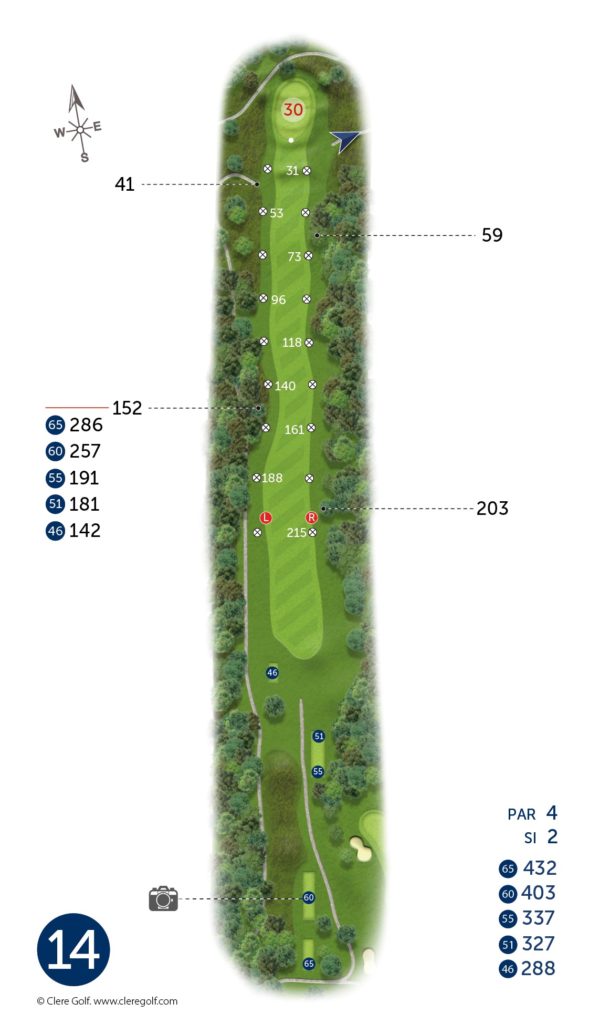
HOLE 14
Hole 14 is a challenge for all players. Its length from the back tee to the green measures a whopping 432 yards! In addition to the length, the numerous trees on both sides of the fairway test the player's skill; for longhitters, they make the course extra narrow. Both the tee and the green are slightly higher than the fairway. The green is made up of three levels, rising toward the back. An approach that is too short makes putting extra challenging.
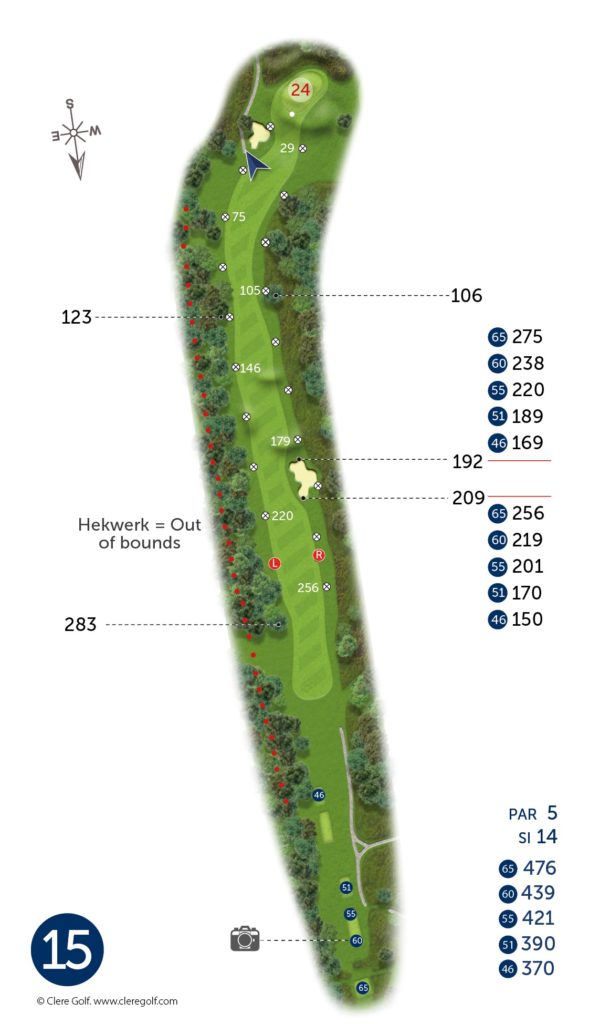
HOLE 15
The 15th hole is a par 5 with a dogleg to the right. The fairway is wide, to the left are many trees and shrubs, to the right trees interspersed with heather and a fairway bunker that comes into play on long drives. At 150m from the green, the hole bends to the right and you can see the green lying on a high plateau. Smart players keep to the left side of course so they are not bothered by the pines on the right. A slightly too long stroke to the green is stopped by the hill behind it; a too short approach rolls inexorably all the way back. The green slopes up to the back with a sloping ledge in the middle that divides the green into two levels. After holing out, look back for the beautiful view!
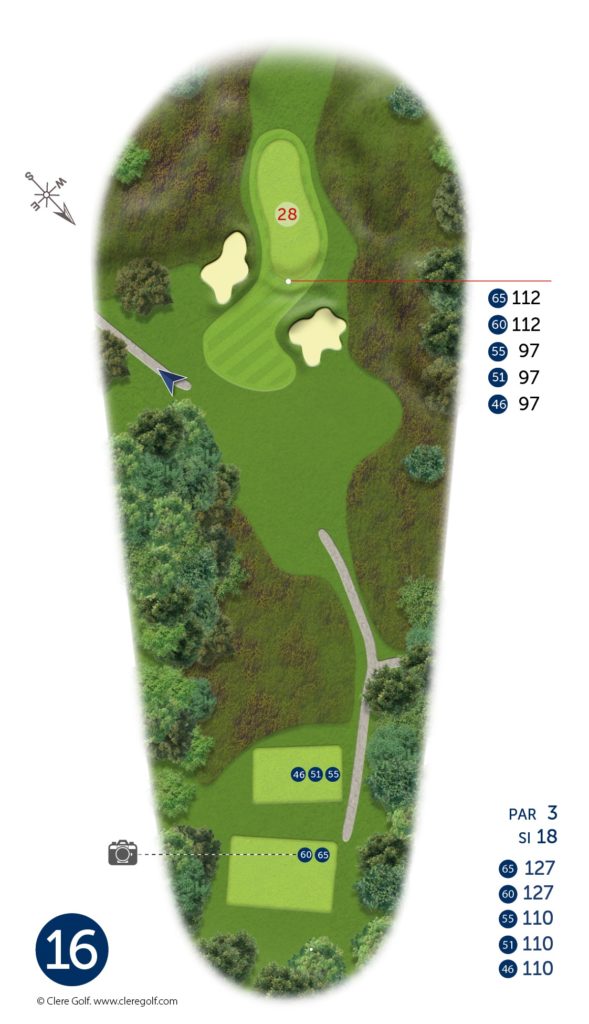
HOLE 16
Hole 16 is the easiest hole on the course according to the rating. From a high tee, players have a fantastic view of this distinctive hole; praised by many golf experts as one of the most beautiful par 3s in the Netherlands, if not the most beautiful!
The narrow green is for a large part surrounded by heather hills, while two bunkers make playing difficult. Club choice is therefore important.
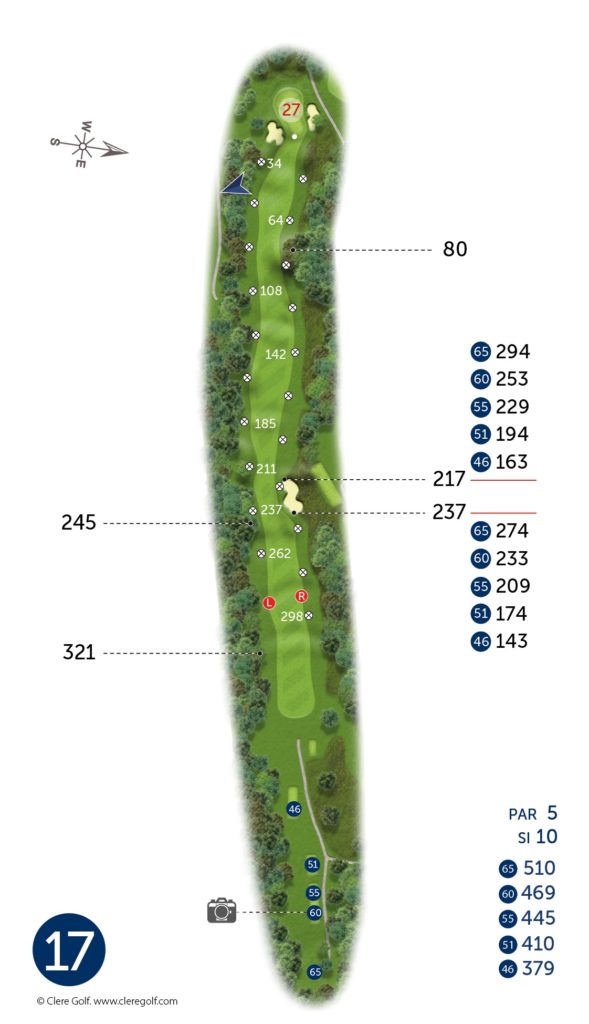
HOLE 17
The final par 5 of the course is characterized by a sharply sloping fairway up to the saddle. From the saddle, the fairway slopes down into several plateaus. Players who choose the left side are not bothered by the large oak tree on the right side in their approach to the well-guarded green with bunkers on both sides.
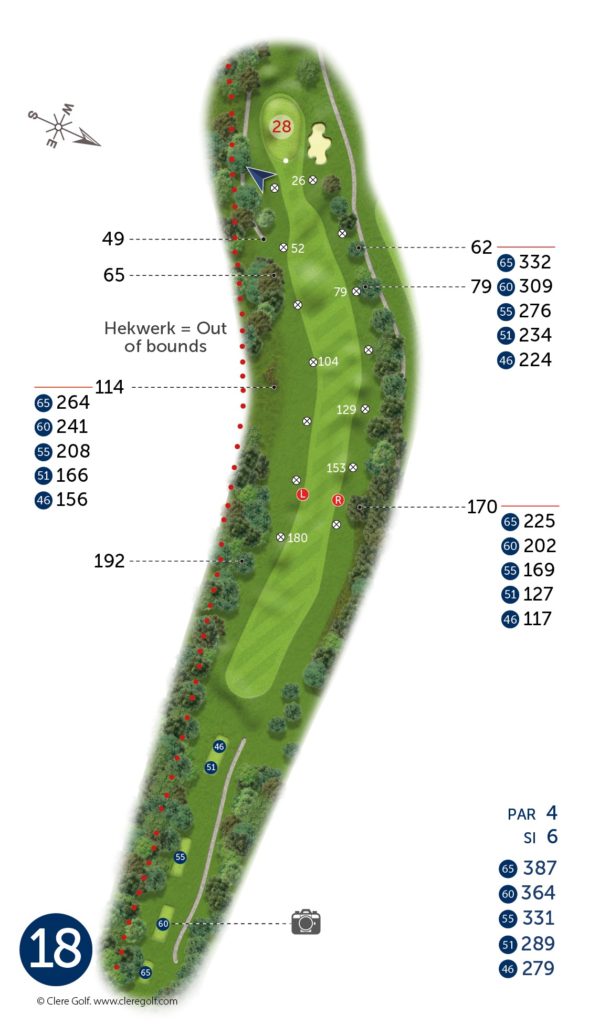
HOLE 18
The last hole has a sharp dogleg to the left. Through a narrow passage, players hit to a wide fairway that slopes to the right. Behind the little hill on the left, the rough continues for quite a while; players who try to cut the corner are often faced with a second shot from an awkward position. In the bend, players can see the green. On the right side of the big green are two bunkers, the left side next to the green is out of bounds. The birch on the right and the pines on the left require extra precision when hitting them.
STYLING
With its new, minimalist course styling, Rosendaelsche Golfclub is taking another step towards the golf of tomorrow. No more ladies or gentlemen's tees, and as few artificial attributes as possible. Golf at its purest!
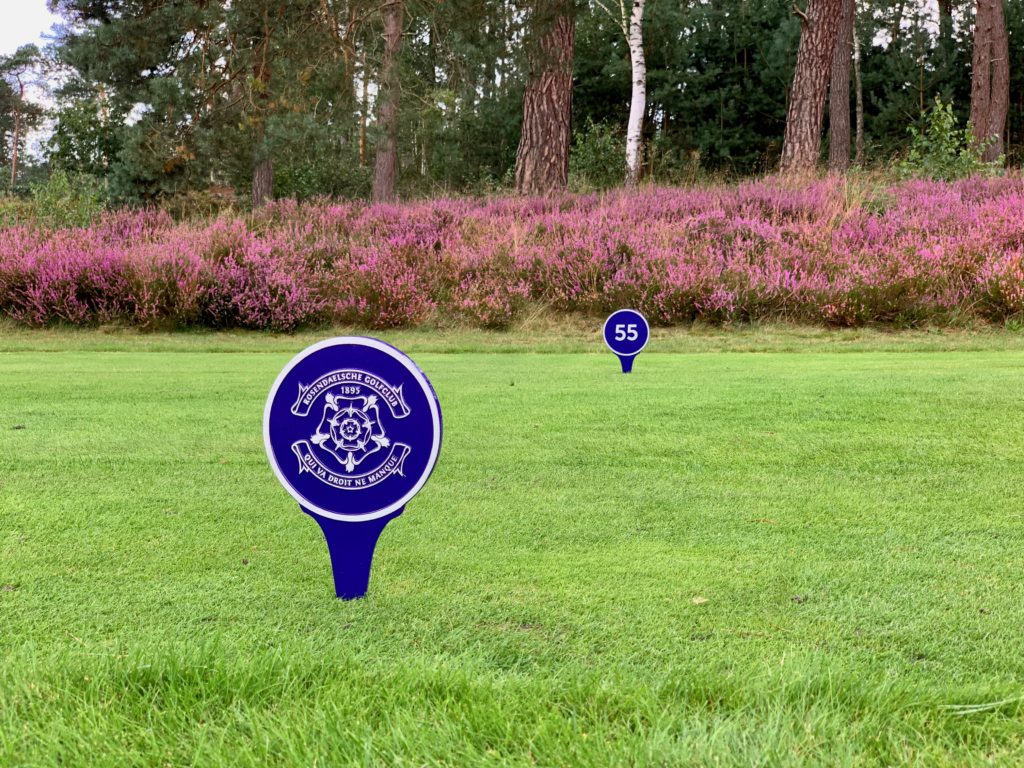
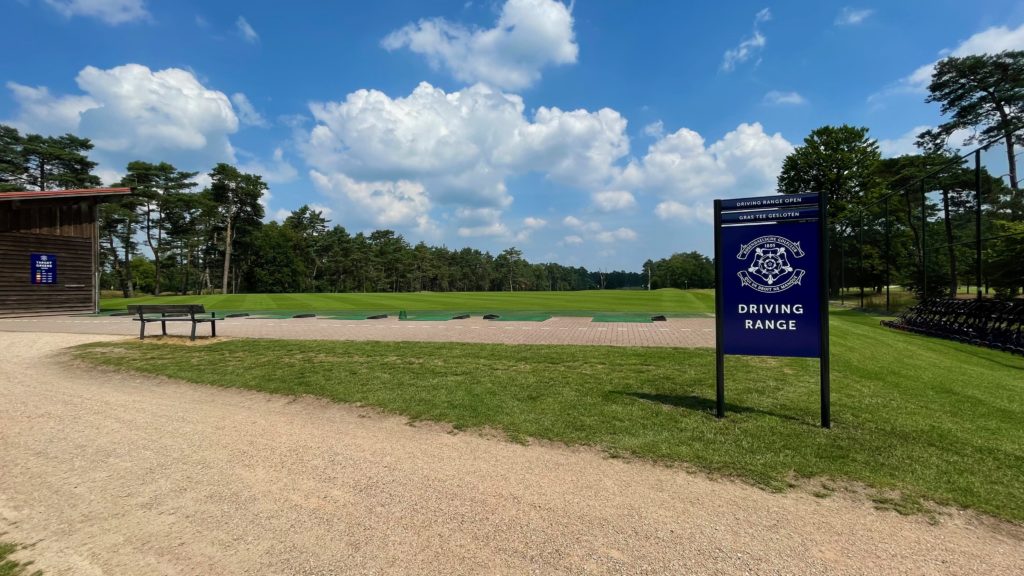
PRACTICE AREA
Practicing at Rosendaelsche Golfclub is an experience in itself. All aspects of the game of golf can be trained in a very spacious practice area. That fits with the history and also with the ambition of our club: Rosendaelsche Golfclub is a club where you can learn to play better golf. Our pro's from the Golf Academy use the practice area, but every golfer at Rosendaelsche Golfclub can always practice all parts of the game themselves as well. Balls to practice are free of charge.
COURSE HISTORY
In 1895 additional land was leased next to the grounds of Rosendael Castle in order to construct a total of 9 holes, and the Rosendaelsche Golfclub was founded. In 1908, the golf club moved to its current location on the Delhuijzen estate, then owned by Mr. Aalbrecht del Court van Krimpen. Expansion to 18 holes followed in 1977, designed by British architect Frank Pennink. In 2014 the course, with 2 new holes and various modifications by course architect Christoph Staedler, received its current form.
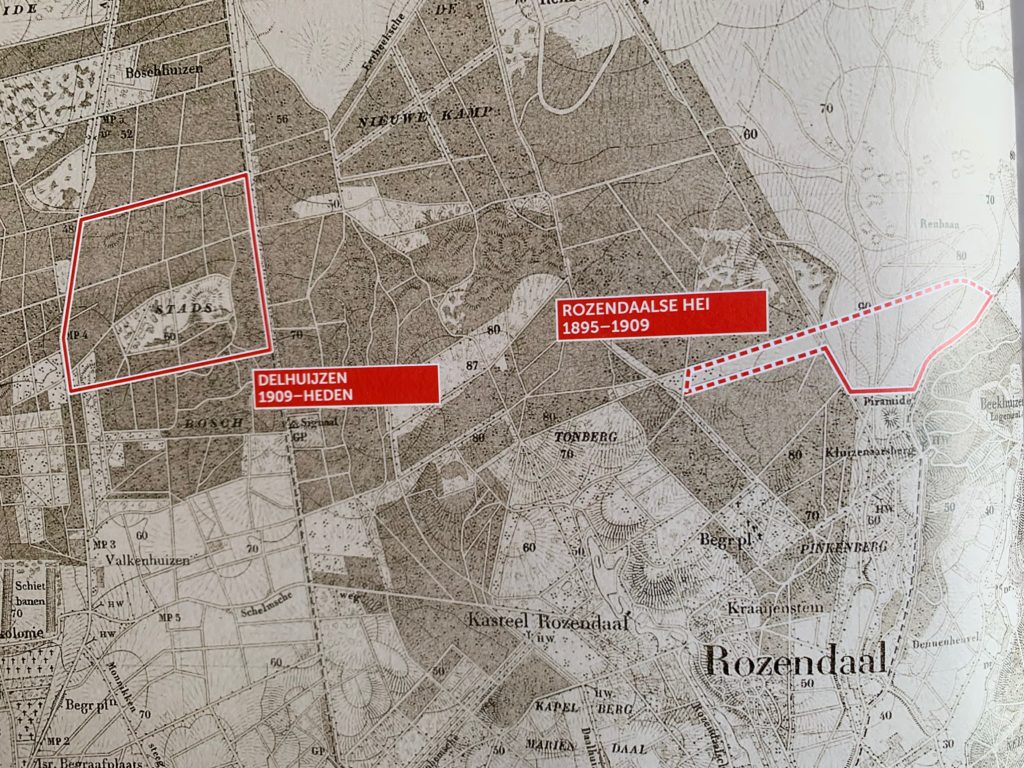
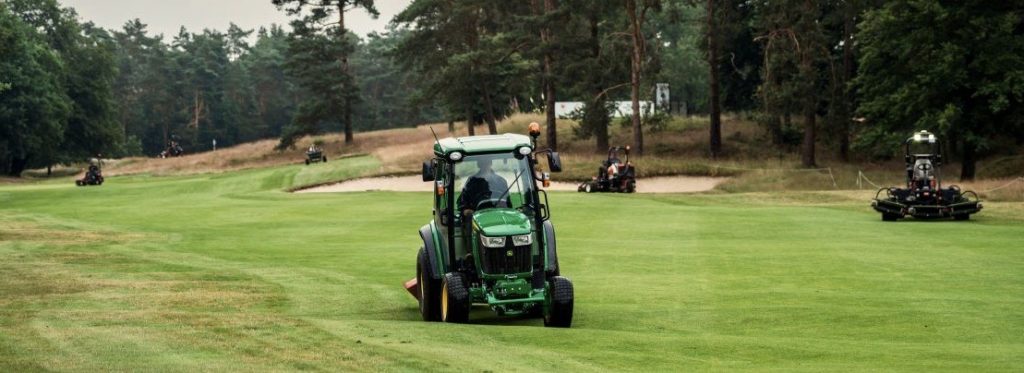
GREENKEEPERS
Rosendaelsche Golf Club has its own specialized team of greenkeepers. They ensure that course is as playable as possible in all seasons and in (almost) all circumstances. This is done according to the latest insights and with modern means. There is a forest management plan and a course management plan which are both implemented and kept up to date.
FLORA AND FAUNA
The Rosendaelsche Golf Club is situated in a Natura 2000 area. By enthusiastic club members and involving Larenstein University of Applied Sciences, an extensive inventory of flora and fauna was made as the basis for an extensive GEO report, necessary for obtaining the GEO certificate; an international hallmark for responsible and environmentally friendly management. The Rosendaelsche Golf Club has had the GEO certificate since 2012.
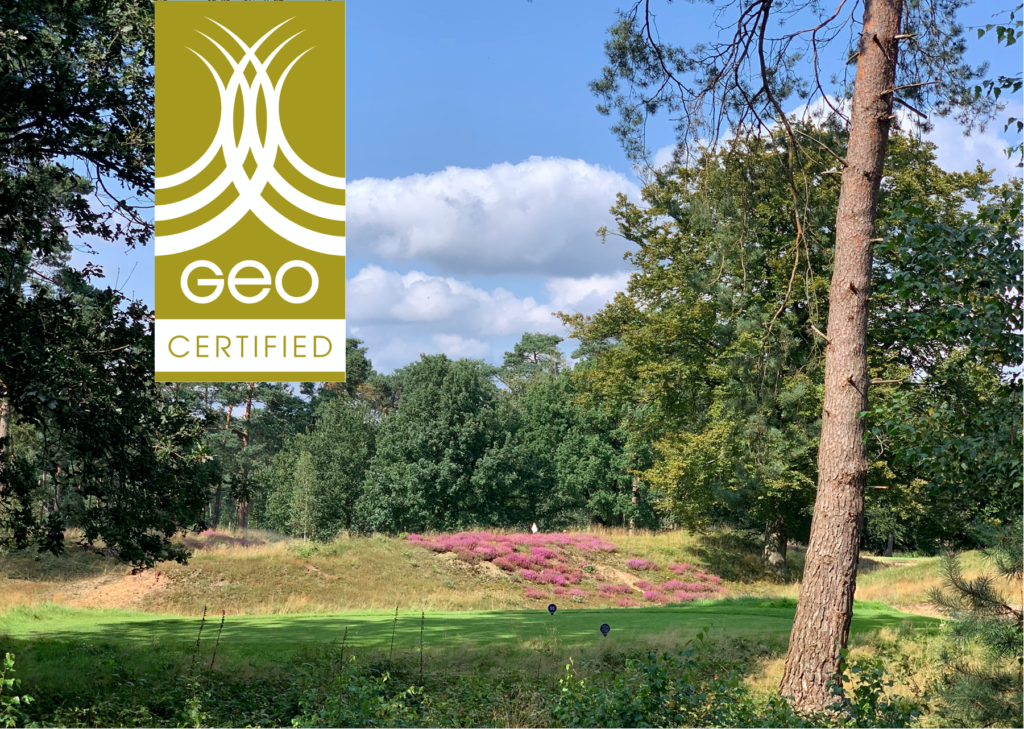
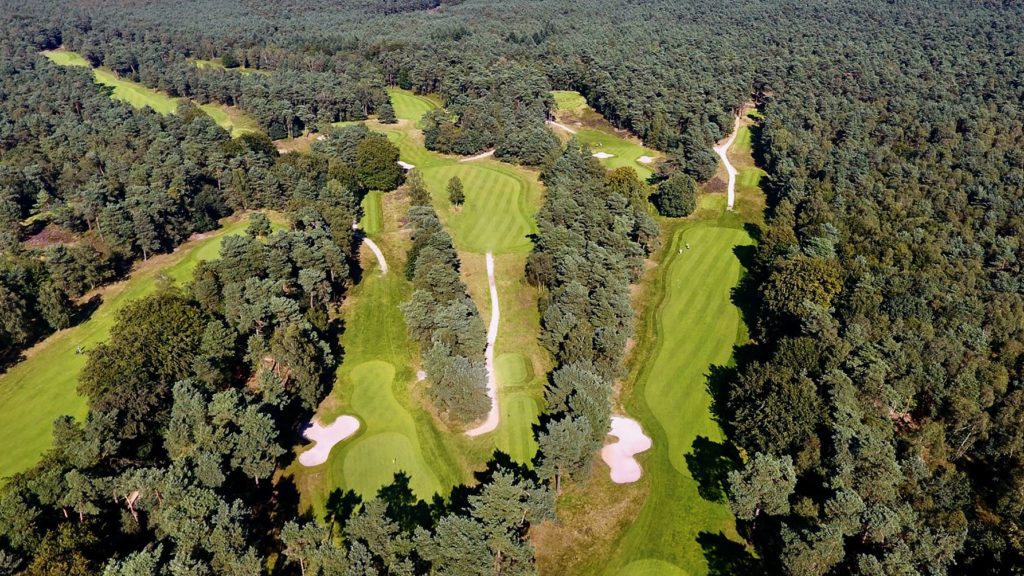
EXPERIENCE
Some videos to get you in the mood. Frank Versteegh made beautiful drone shots of the course.
From GOLF.NL, Niels and Sietse visited our course in 2021.
